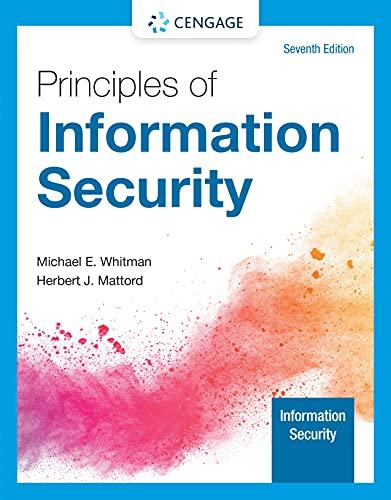Answered step by step
Verified Expert Solution
Question
1 Approved Answer
a. Cross Site Request Forgery (CSRF) attacks against web sites that rely solely on cookies for session management. Briefly explain a CSRF attack on

a. Cross Site Request Forgery (CSRF) attacks against web sites that rely solely on cookies for session management. Briefly explain a CSRF attack on such a site. b. A common CSRF defense places a token in the DOM of every page (e.g., as a hidden form element) in addition to the cookie. An HTTP request is accepted by the server only if it contains both a valid HTTP cookie header and a valid token in the POST parameters. Why does this prevent the attack from part (a)? c. One approach to choosing a CSRF token is to choose one at random. Suppose a web server chooses the token as a fresh random string for every HTTP response. The server checks that this random string is present in the next HTTP request for that session. Does this prevent CSRF attacks? If so, explain why. If not, describe an attack. d. Another approach is to choose the token as a fixed random string chosen by the server. That is, the same random string is used as the CSRF token in all HTTP responses from the server over a given time period. Does this prevent CSRF attacks? If so, explain why. If not, describe an attack. e. Why is the Same-Origin Policy important for the cookie-plus-token defense?
Step by Step Solution
There are 3 Steps involved in it
Step: 1
a In a CSRF attack against a site relying solely on cookies for session management an attacker tricks a users browser into making an unintended and ma...
Get Instant Access to Expert-Tailored Solutions
See step-by-step solutions with expert insights and AI powered tools for academic success
Step: 2

Step: 3

Ace Your Homework with AI
Get the answers you need in no time with our AI-driven, step-by-step assistance
Get Started


